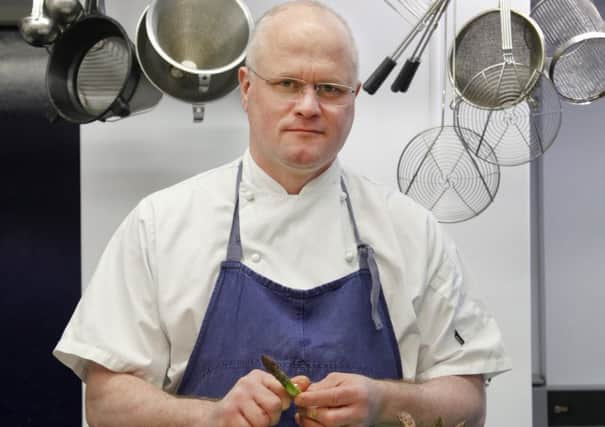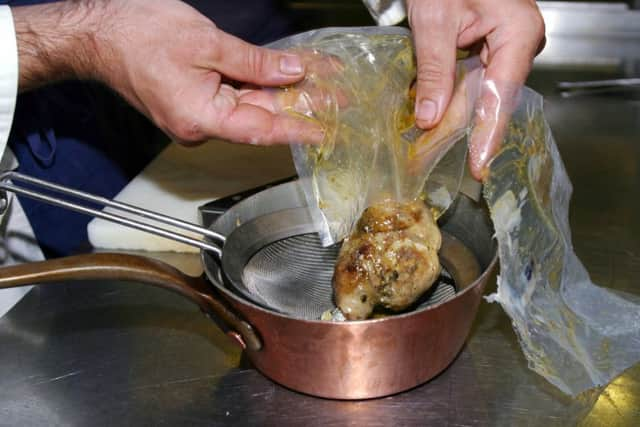The eco-friendly Edinburgh restaurant where plastic’s off the menu


French-Swiss chef Jérôme Henry, who trained with culinary legend Anton Mosimann, has outlawed the sous vide method, which involves vacuum-packing meat in zip-lock plastic bags and cooking it slowly in a temperature-controlled water bath.
He has also banished clingfilm and plastic straws from his capital restaurant, Le Roi Fou, which translates as “the mad king”.
Advertisement
Hide AdAdvertisement
Hide AdThe wrap is traditionally used in reams in commercial kitchens, but his team have learned to work without it.


Henry has also made it his mission to tackle other kitchen waste, ensuring his team use every possible bit of food that comes in the door.
Leftovers are composted, going on to make biogas – a methane-rich gas that can be used as a fuel or fertiliser.
He has slashed the amount of non-degradable packaging coming on to the premises by asking suppliers to send produce in cardboard or paper instead of polystyrene and plastic where practical.
Meat and fish on the menu are mostly Scottish and from sustainable and traceable origins, while vegetables are sourced in season and as locally as possible.
He admits the restaurant industry is energy intensive, but believes there are many ways to be greener and still produce world-class dishes.
“When sous vide came along it was revolutionary, but I have stopped using the technique,” he said.
“Out of just one menu there could be ten items being cooked in ten bags, which go straight into the bin.
Advertisement
Hide AdAdvertisement
Hide Ad“Clingfilm has long been the chef’s best friend. Everything is wrapped in it – often many times over. But I decided we could stop this. It’s a wrong item to have.
“I took it out of the kitchen at Le Roi Fou, switching to biodegradable paper, reusable plastic and stainless steel containers with lids.
“For cooking we used to use film when making dishes such as ballotine or for proofing bread. Now we use washable cloths instead.
“There are hundreds of ways to reduce the cost to the environment. We can start by remembering how we used to do it – look at old cookbooks.”
He stresses the importance of buying local produce and reducing potential waste.
He said: “Be mindful of the process it’s taken for the food to arrive on the plate – the more processed it is and the further distance it has travelled, the less ‘green’ it’s likely to be.
“For me running a restaurant, this is a tough one as I like to use ingredients from all over the world.
“But I try to be sensible by using as much locally sourced and seasonal ingredients as possible, keeping the food that has flown to a minimum, and trying not to overbuy”.
Advertisement
Hide AdAdvertisement
Hide AdThe 46-year-old moved to Edinburgh from London two years ago after falling in love with the Scottish capital during a visit.
Soon afterwards he opened Le Roi Fou with his business partner, Isolde Nash, who designed the interior, with the aim of creating a “feel of home”.